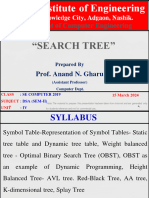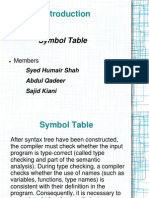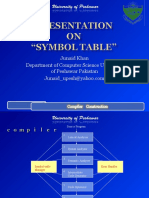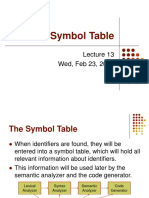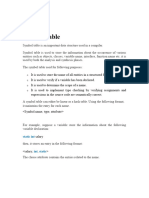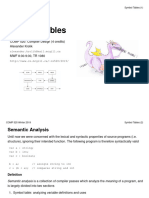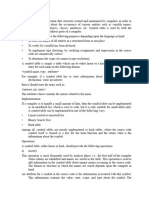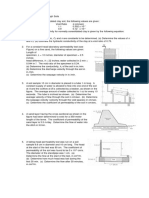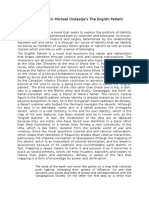0% found this document useful (0 votes)
12 views3 pagesSymbol Table
The symbol table is a crucial data structure in compilers that stores information about variable names and their attributes, allowing for quick data retrieval. It is utilized during both the analysis and synthesis phases of compilation to manage entities such as variables, functions, and their scopes. Symbol-table entries are created by components like the lexical analyzer and are essential for tasks like type checking and verifying variable declarations.
Uploaded by
nikhilmishra1710Copyright
© © All Rights Reserved
We take content rights seriously. If you suspect this is your content, claim it here.
Available Formats
Download as PDF, TXT or read online on Scribd
0% found this document useful (0 votes)
12 views3 pagesSymbol Table
The symbol table is a crucial data structure in compilers that stores information about variable names and their attributes, allowing for quick data retrieval. It is utilized during both the analysis and synthesis phases of compilation to manage entities such as variables, functions, and their scopes. Symbol-table entries are created by components like the lexical analyzer and are essential for tasks like type checking and verifying variable declarations.
Uploaded by
nikhilmishra1710Copyright
© © All Rights Reserved
We take content rights seriously. If you suspect this is your content, claim it here.
Available Formats
Download as PDF, TXT or read online on Scribd
/ 3











